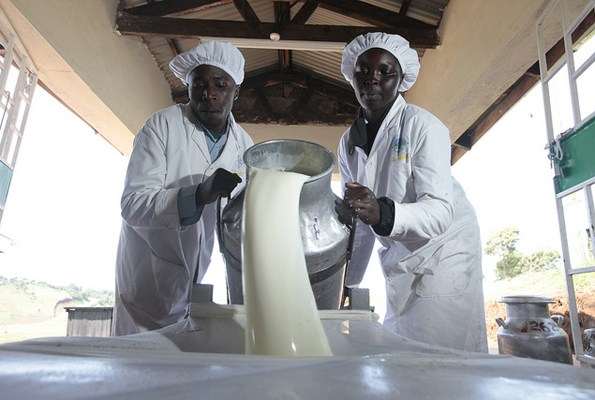FAO Partners with Uganda to Enhance Dairy Product Quality and Expand Export Market

The Food and Agriculture Organization (FAO) has entered a partnership with Uganda to improve the quality of the country’s dairy products and explore new international markets. The partnership with FAO is expected to bolster the growth of the dairy sector in Uganda and promote economic benefits for farmers.
Uganda has entered a new partnership with the Food and Agriculture Organization (FAO), a United agency to boost the quality of the country’s milk exports.
FAO will help Uganda to boost its dairy products quality, on top of assessing potential new markets abroad, as part of the country’s heightened efforts to rejuvenate the dairy sector.
In a statement, Marco V. Sánchez, the Deputy Director of Agrifood economics at FAO said the new development that involves a Dairy Policy Action Plan will help to perpetuate value addition to the country’s milk, which will in turn aid to actualize competitive dairy products on the world market.
“With that and the measures and investments in the Dairy Policy Action Plan, the dairy sector is set up for transformation for better production and better nutrition, leaving no one behind,” said Sánchez.
His remarks come against the backdrop of this year’s World Milk Day, whose focus was showcasing how dairy is reducing its environmental footprint, while also providing nutritious foods and livelihoods.
It should be noted that the Dairy Policy Action Plan, which gained traction last year, outlines several measures to be taken to boost consumption, incentivize production, improve quality and export potential of Uganda’s dairy products.
Such measures include infrastructural development, curbing waste and loss along the supply chain, enhancing operations at milk collection centres and processing facilities across the country.
It will also involve improving the overall quality and shelf-life of milk and meeting food-safety standards for exports, amid heightened levels of milk production from 1.9 billion litres in 2014 to 3.2 billion litres in 2022.
The strategy aims to meet the growing demand of the country’s dairy products abroad, which is expected to peak, amid local consumption levels.
Besides, it will incentivize investment throughout the dairy value chain from production to upstream and downstream operations, which would also bring higher productivity gains, year-round supplies, and better quality.
The Executive Director for Dairy Development Authority Samson Akankiza said milk in Uganda, not only is a source of livelihood to millions of households, but also forms a cornerstone of foundation for proper childhood growth and health.
“As DDA we are putting a major emphasis on increasing milk consumption domestically through the School Milk Program, and also expanding our export market portfolio for increased foreign exchange that translates to more earnings for our farmers,” said AKankiza, adding; “The dairy export competitiveness study is timely to re-enforce our quest for additional export markets for our milk. We are grateful for the efforts and collaboration with FAO in ensuring the growth of our dairy sector.”
Currently, the Democratic Republic of Congo, South Sudan, Zambia, and Algeria have proved new virgin markets for Uganda’s milk as well as the United Arab Emirates, Syria, Japan, Oman, USA, Nepal and Bangladesh, according to the Ugandan Dairy Development Authority.
However, Kenya, which is always skeptical about the safety of Uganda’s products, has constantly banned access of Ugandan milk on its market with the latest ban taking shape last month, to shield domestic milk producers from the competition.
Kenya’s first decision to cut off Uganda’s milk products from her market was actualized in early 2020, but rescinded in October 2022 when then President Uhuru Kenyatta said cheap milk imported from Uganda would benefit both countries. Sadly, for Uganda, the ban was reinstated after a period of only four months.







